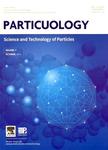Optimized synthesis and photovoltaic performance of TiO_2 nanoparticles for dye-sensitized solar cell
Optimized synthesis and photovoltaic performance of TiO_2 nanoparticles for dye-sensitized solar cell作者机构:Department of Chemical Engineering and ProcessFaculty of Engineering and Built EnvironmentUniversiti Kebangsaan Malaysia Department of ElectricalElectronic and System EngineeringFaculty of Engineering and Built EnvironmentUniversiti Kebangsaan Malaysia Department of Chemical and Food EngineeringUniversity of Salerno
出 版 物:《Particuology》 (颗粒学报(英文版))
年 卷 期:2013年第11卷第6期
页 面:753-759页
核心收录:
学科分类:07[理学] 0817[工学-化学工程与技术] 08[工学] 070205[理学-凝聚态物理] 080501[工学-材料物理与化学] 0805[工学-材料科学与工程(可授工学、理学学位)] 080502[工学-材料学] 0703[理学-化学] 0702[理学-物理学]
主 题:Titanium dioxide Hydrolysis precipitation Dye sensitized solar cell Optimization Response surface methodology
摘 要:This paper presents response surface methodology (RSM) as an efficient approach for modeling and optimizing TiO2 nanoparticles preparation via co-precipitation for dye-sensitized solar cell (DSSC) perfor- mance. Titanium (IV) bis-(acetylacetonate) di-isopropoxide (DIPBAT), isopropanol and water were used as precursor, solvent and co-solvent, respectively. Molar ratio of water, aging temperature and calcina- tion temperature as preparation factors with main and interaction effects on particle characteristics and performances were investigated, Particle characteristics in terms of primary and secondary sizes, crys- tal orientation and morphology were determined by X-ray diffractometry (XRD) and scanning electron microscopy (SEM). Band gap energy and power conversion efficiency of DSSCs were used for perfor- mance studies. According to analysis of variance (ANOVA) in response surface methodology (RSM), all three independent parameters were statistically significant and the final model was accurate. The model predicted maximum power conversion efficiency (0.14%) under the optimal condition of molar ratio of DIPBAT-to-isopropanol-to-water of 1 : 10:500, aging temperature of 36 C and calcination temperature of 400 ℃. A second set of data was adopted to validate the model at optimal conditions and was found to be 0.14 ± 0.015%, which was very close to the predicted value. This study proves the reliability of the model in identi(ving the optimal condition for maximum performance.



